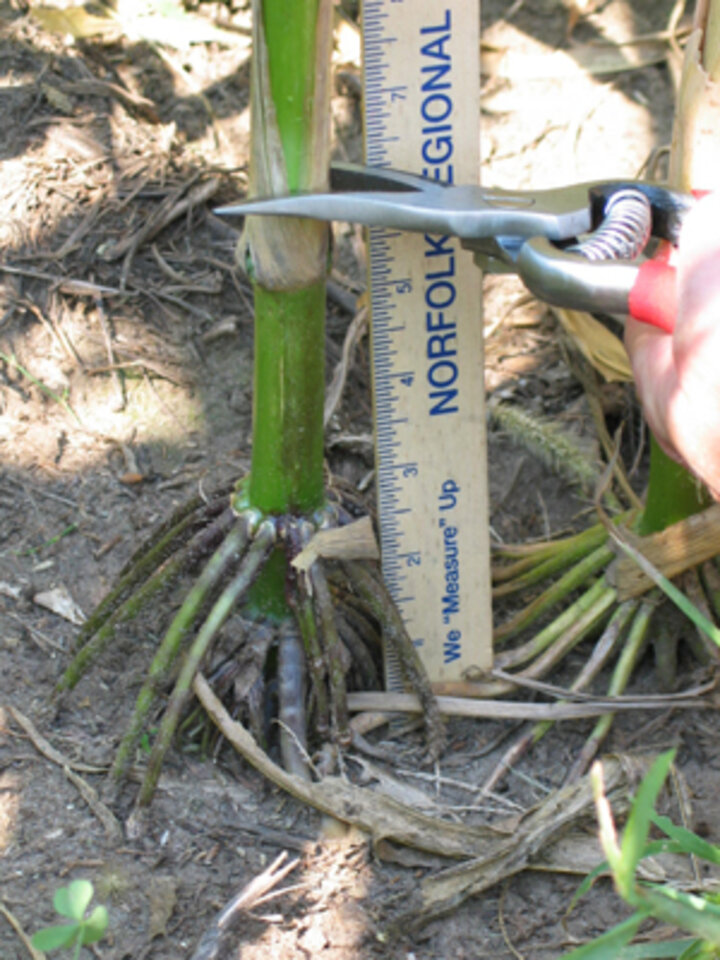Late-season corn stalk nitrate tests taken at physiological maturity can be a valuable tool to assess your nitrogen management program. They can help determine how much applied nitrogen remained post-harvest and, when used along with your knowledge of field and cultural practices, can help you fine-tune your soil management strategy and possibly adjust your application rates next year, The test, developed by researchers at Iowa State University, is best used in corn fields where moisture was not a limiting factor.


Collecting Field Samples
(Top) Take corn stalk samples as early as when the milk line is one-fourth of the way down the kernel and up to three weeks after black layer formation in 80% of the kernels. Take an 8-inch segment of cornstalk from 6 inches to 14 inches above the ground. (Lower) Stalk samples should be kept cool and wrapped in paper rather than plastic to avoid mold.This year may be particularly interesting since heavy rains earlier in the year, particularly in eastern Nebraska, may have contributed to increased nitrogen leaching below plant-available levels. Given the wet conditions, nitrogen applications planned to be applied through irrigation, may not have been made.
I have seen where late season nitrogen was in the plant stalks, but did not affect yield. I have also seen, mostly on sandy ground, where low stalk nitrates (below 700 ppm) did not indicate N deficiency, but effective utilization of all the nitrogen in the plant.The best use of this test is to compare different treatments, such as a strip trial where extra nitrogen was applied sidedress. The information from the stalk nitrate test is best interpreted with yield data and used as part of your overall nitrogen management assessment.
For more information on how to take the test in your fields, and how to interpret the results and consider the findings when planning next year's nitrogen management, please see this archived CropWatch article: Does your Current Corn Nitrogen Strategy Deserve an A or a D?
Additional Resources
For more information on recommended nitrogen rates for Nebraska corn production, see the Extension publication, Fertilizer Suggestions for Corn (EC117), or visit Soil Management to Optimize Crop Production in CropWatch, where there are worksheets and an on-line calculator to help determine recommended nitrogen rates.
For more information on this test, also see the Iowa State University resource referenced above or Cornstalk Testing to Evaluate the Nitrogen Status of Mature Corn (AY-322-W), a Purdue University publication.